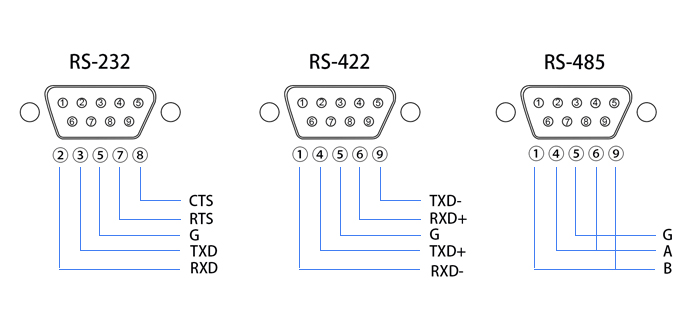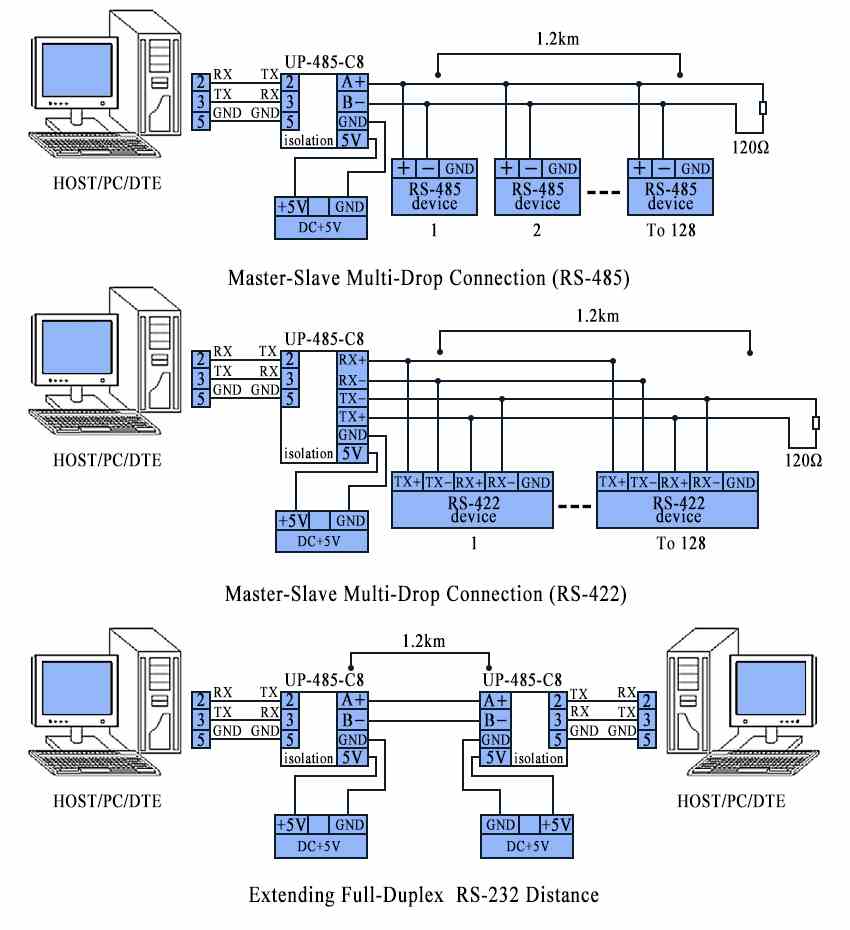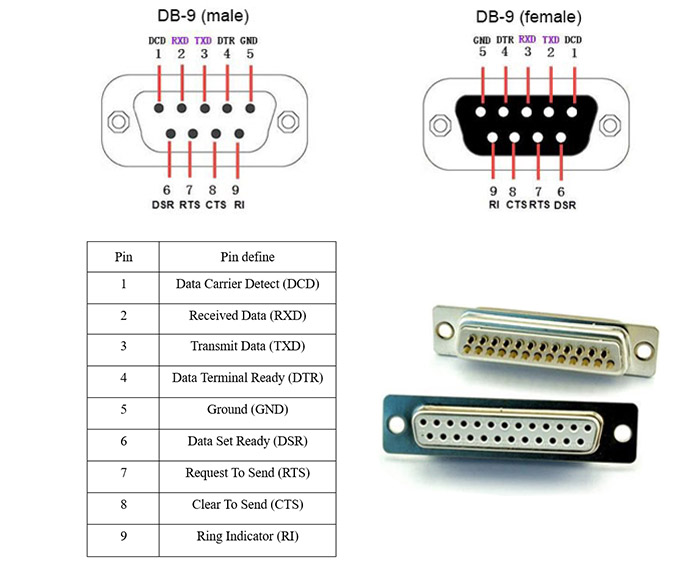There are many differences between RS232 vs RS485, mainly in Pinout, Number of Drivers, Nodes, Distance, Speed, and Application, as shown below:
Pinout

Characteristics
Characteristics of RS232, RS422, and RS485 |
| RS232 | RS422 | RS485 |
Signaling | Unbalanced | Balanced | Balanced |
Max number of drivers | 1 | 1 | 32 |
Max number of receivers | 1 | 10 | 32 |
Duplex | full duplex | full duplex | half duplex/full duplex |
Network topology | point-to-point | Multi-drop | Multi-point |
Max distance (acc. standard) | 15m | 1200m | 1200m |
Max speed at 12 m | 20 kbs | 10 Mbs | 10Mbs |
Max speed at 1200 m | (1 kbs) | 100 kbs | 100 kbs |
Max slew rate | 30 V/μs | n/a | n/a |
Receiver input resistance | 3~7 kΩ | >=4kΩ | >=12kΩ |
Driver load impedance | 3~7 kΩ | 100 Ω | 54 Ω |
Receiver input sensitivity | ±3 V | ±200 mV | ±200 mV |
Receiver input range | ±15 V | ±10 V | –7~12 V |
Max driver output voltage | ±25 V | ±6 V | –7~12 V |
Min driver output voltage | ±5 V | ±2.0 V | ±1.5 V |
Number of Drivers and Nodes
With the RS485, one device is able to control 32 other devices. But with the RS232, there is only 1 driver and 1 receiver. RS232 uses point to point communication while RS485 uses a multi-point network.
Distance
The maximum communication distance of RS485 is 1200m while RS232 only supports 15m, RS232 has a lack of immunity for noise on the signal lines. RS232 is susceptible to Noise which limits its maximum communication distance and speed.
Speed
RS485 communication is also much higher at 10MBit/s (decreases as distance increases) compared to 20KBit/s with RS232.
Application
RS-232 only allows one-to-one communication (single station capability), The RS-485 interface allows up to 128 transceivers on the bus (with multi-station capability).





















